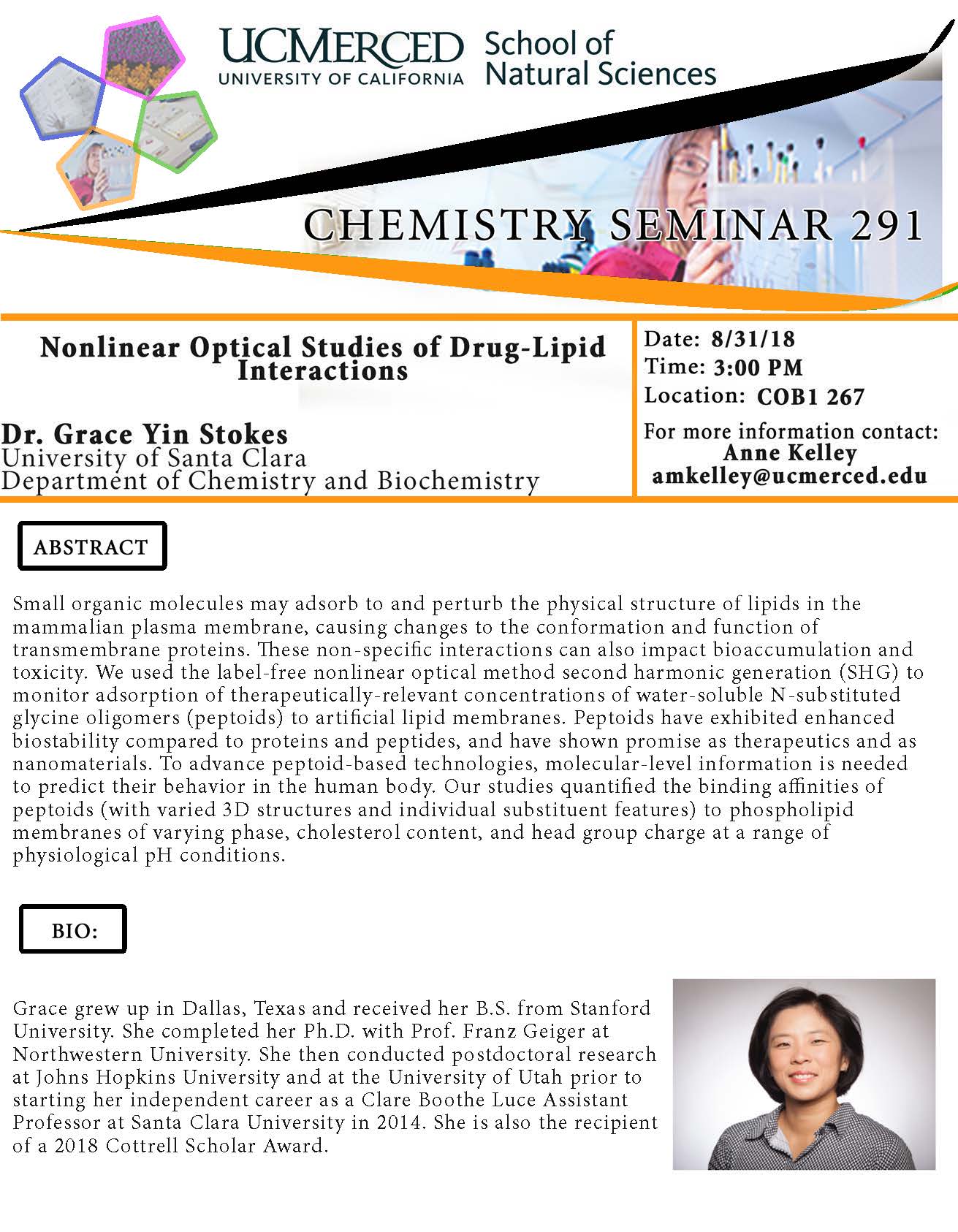
Dr. Grace Yin Stokes, University of Santa Clara
Abstract:
Small organic molecules may adsorb to and perturb the physical structure of lipids in the mammalian plasma membrane, causing changes to the conformation and function of transmembrane proteins. These non-specific interactions can also impact bioaccumulation and toxicity. We used the label-free nonlinear optical method second harmonic generation (SHG) to monitor adsorption of therapeutically-relevant concentrations of water-soluble N-substituted glycine oligomers (peptoids) to artificial lipid membranes. Peptoids have exhibited enhanced biostability compared to proteins and peptides, and have shown promise as therapeutics and as nanomaterials. To advance peptoid-based technologies, molecular-level information is needed to predict their behavior in the human body. Our studies quantified the binding affinities of peptoids (with varied 3D structures and individual substituent features) to phospholipid membranes of varying phase cholesterol content, and head group charge at a range of physiological pH conditions.
Flyer File: stokes_grace_ccb_flyer.pdf



